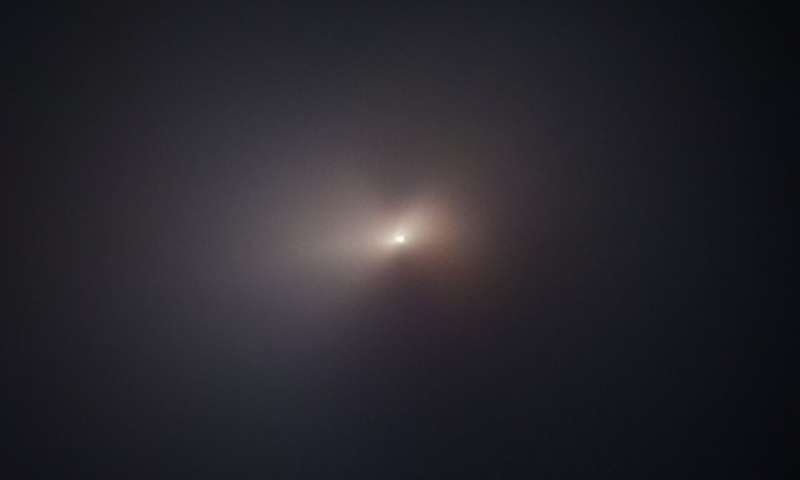At https://phys.org/news/2020-08-robotic-telescope-closest-asteroid-earth.html … on August 16th a robotic survey camera at Palomar Observatory near San Diego spotted an asteroid, or lump of rock, that had passed earth at only 1830 miles distance. This is above the surface. It is said to be the closest known asteroid fly by in recent years, although the story appears to give another example of an even closer pass by. It was small – just 20 feet across. If it had entered the atmosphere it would probably have burnt up, it is thought. This is further evidence that space rocks are in our vicinity all the time without anyone in the human world below realising it (until the modern era of space cameras). This asteroid follows another close one in 2011, and of course, the Chelyabinsk meteor of 2013, which did enter the atmosphere and explode into fragments. Three in less than 3 years.
The actual image was found by an Indian student at the Indian Institute of Technology in Bombay as the robotic camera images are pored over by groups of students as well as astronomers, around the world.
On a similar theme we have images of Comet Neowise taken by the Hubble space camera – see https://phys.org/news/2020-08-hubble-snaps-close-up-comet-neowise.html … taken as the comet passed around the sun. Dust and ice is being sublimated from the surface of the nucleus at high velocity. The jets appear as cone like structures before being fanned out by the rotation of the nucleus. The image below features the coma, the fine shell surround the nucleus, and its dusty output. The comet was travelling at 60km a second, it has been calculated, and is now heading back to the outer solar system. Neowise, it seems, has a solid nucleus.

